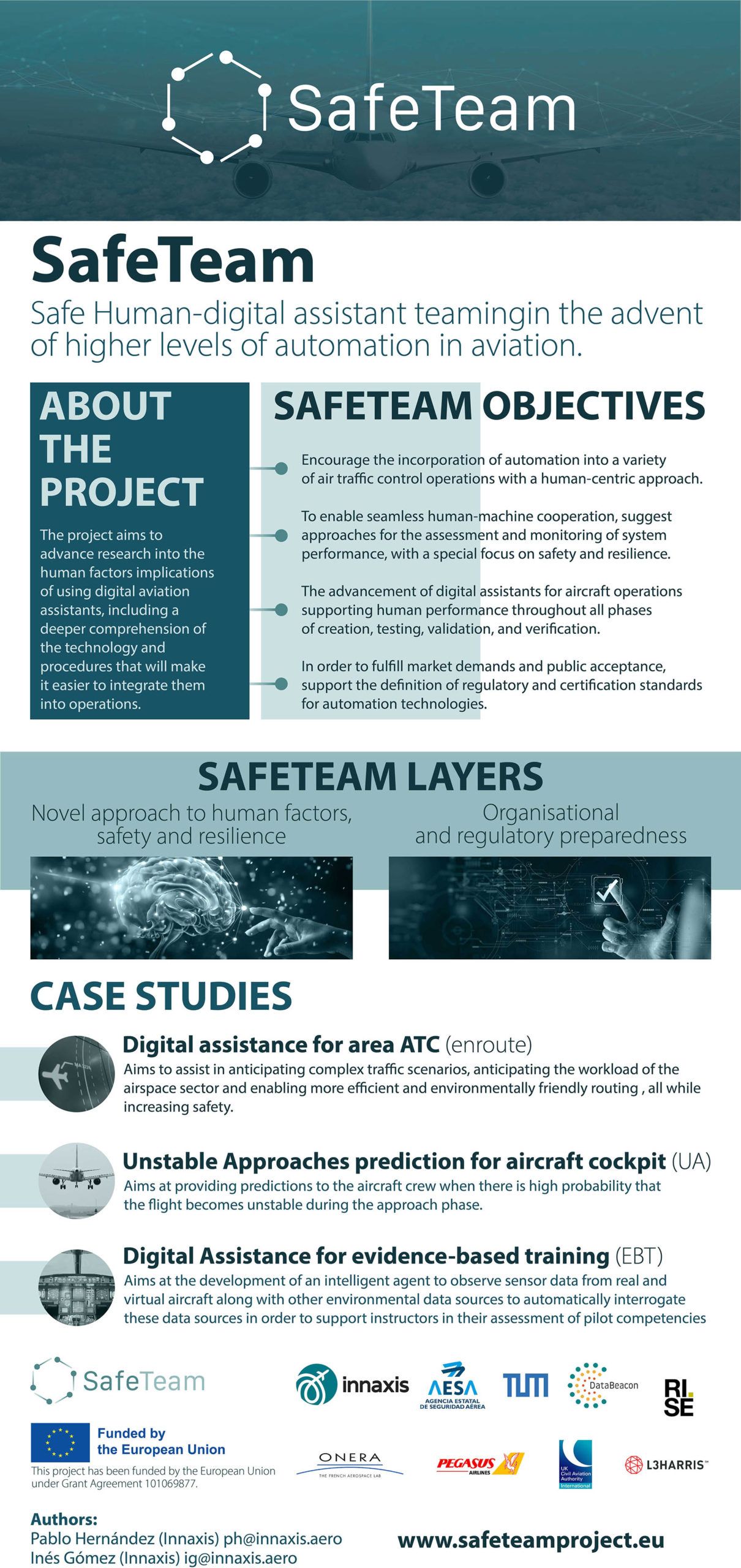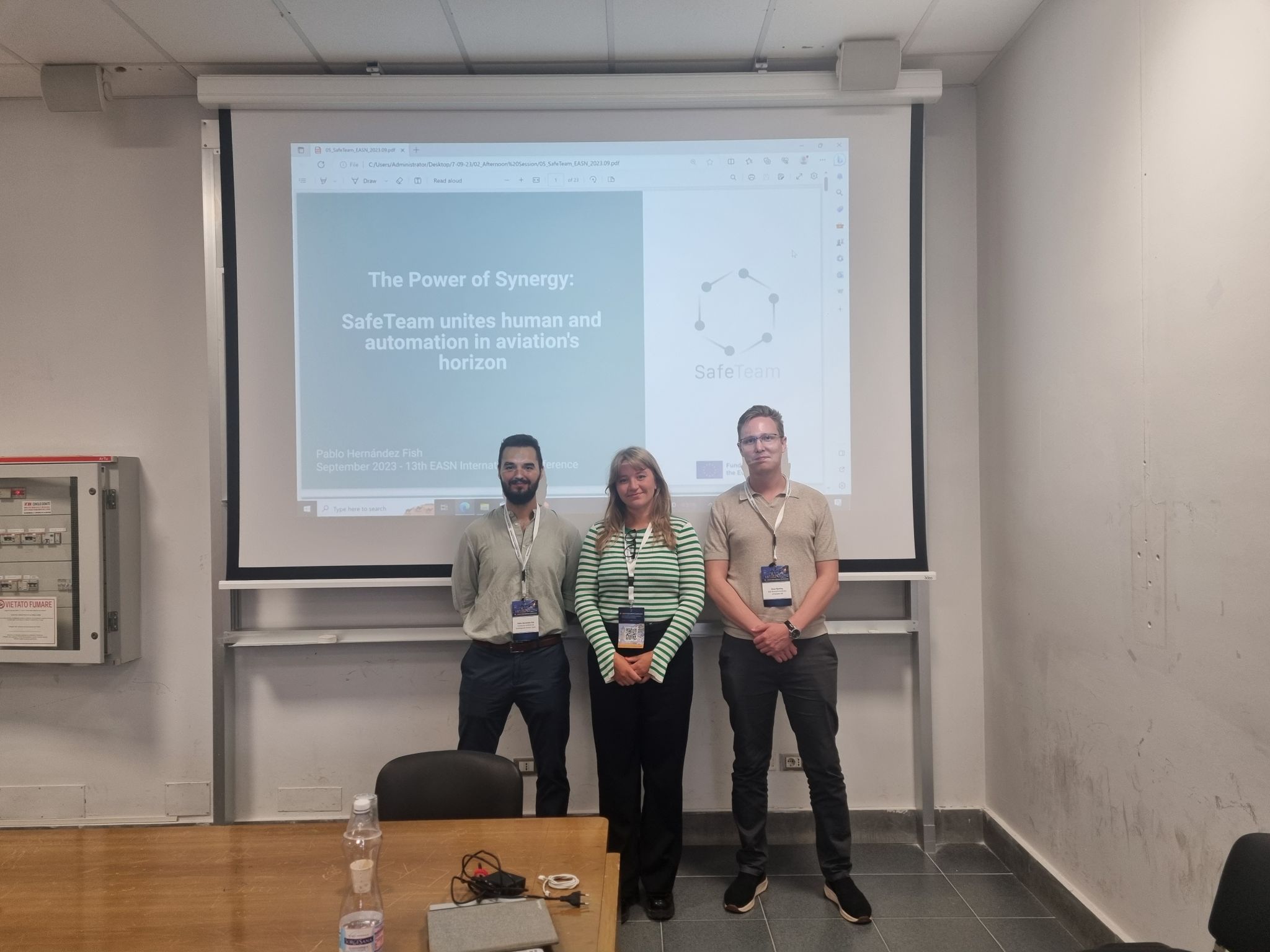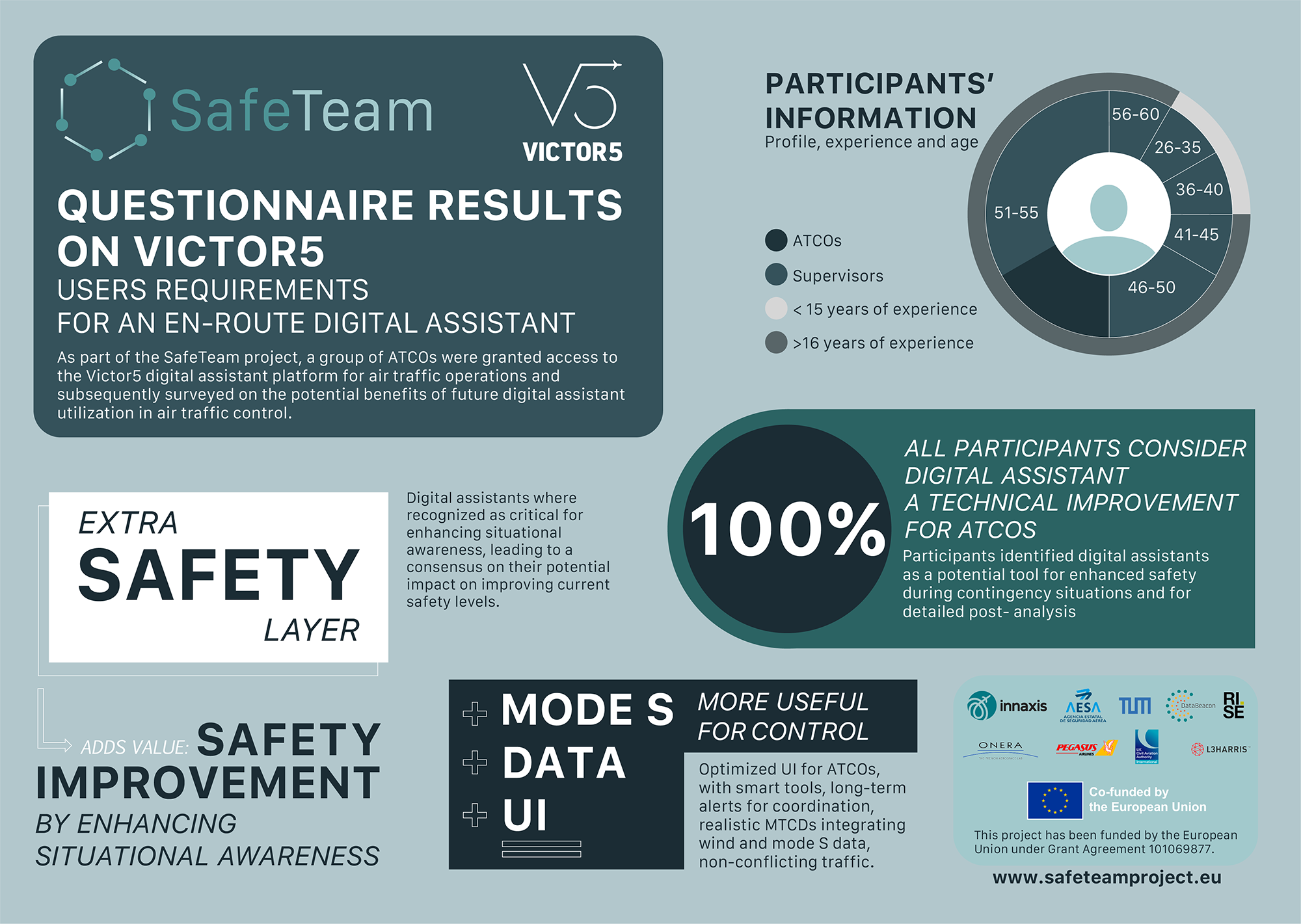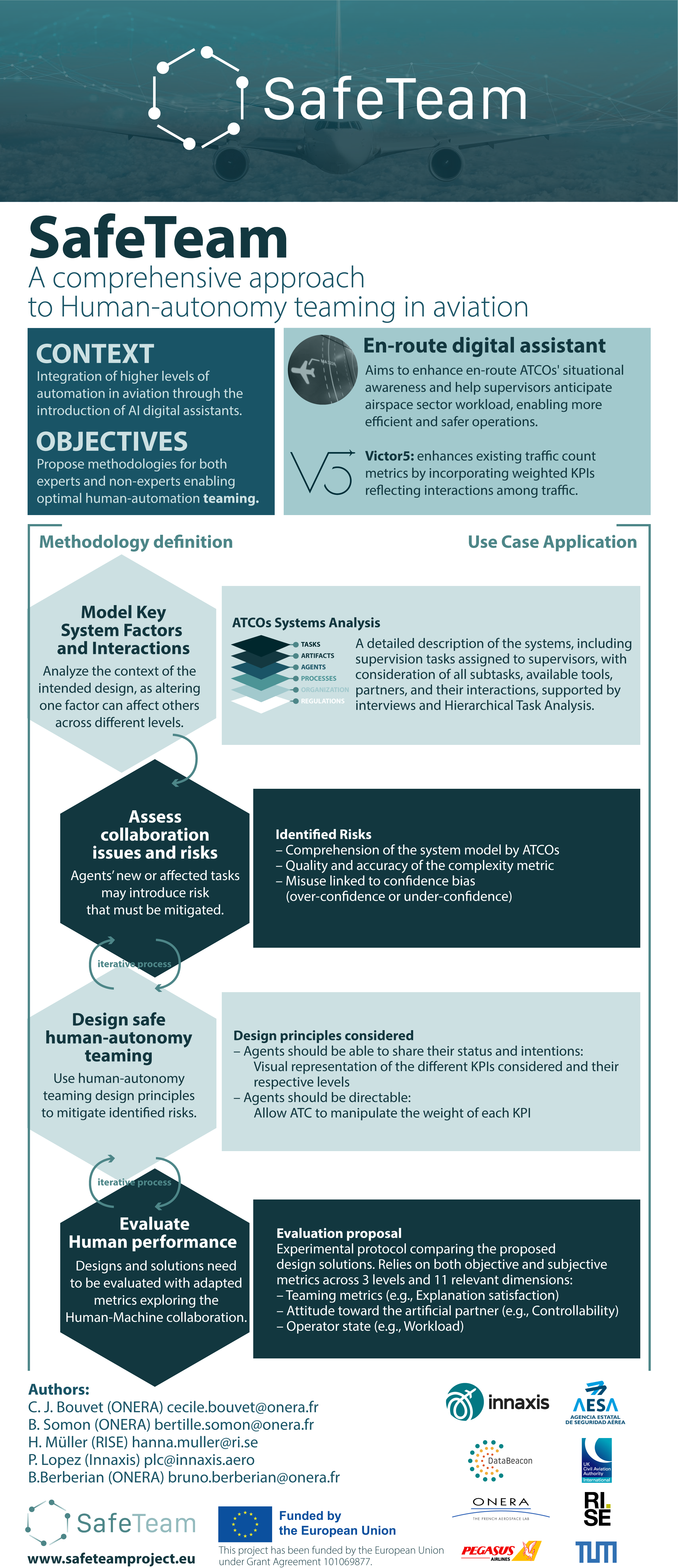SafeTeam
Safe Human-Digital Assistant
teaming for higher levels
of automation in aviation
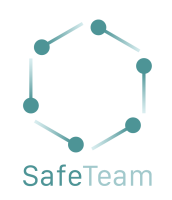
SafeTeam progresses on the human factors aspects on the use of digital assistants to aviation, including a deeper understanding on the technology and processes that will facilitate the adoption of AI tools and integration into operations, enhancing human cognitive abilities and potentially automation. The project will also look into approval and certification issues, concretely on aspects related to the human ability to operate sophisticated AI tools and explainability of AI operations.
About SafeTeam
SafeTeam Objectives
-
Facilitate a human-centric approach to automation and its integration into a wide spectrum of air traffic operations.
-
Propose methodologies for the assessment and monitoring of the system performance, with special focus on safety and resilience, to enable seamless Human-Machine cooperation.
-
Progress in the development of Digital Assistants for aviation operations in support of human performance for all development, testing, validation and verification phases.
-
Support the definition of regulatory and certification requirements for automation tools to address market needs and societal acceptance.
SafeTeam layers

Novel approach to human factors, safety and resilience

Organisational and regulatory preparedness
SafeTeam case studies
Case Study 1 – Digital assistance for area ATC (enroute)
Digital assistants have the innovation potential to transform the operational room by anticipating complex traffic scenarios, forecasting airspace sector workload and allowing more efficient and environmentally-friendly routing—all while increasing safety.
SafeTeam will incorporate human factors expertise according to the targeted level of autonomy and corresponding controller-machine tasks distribution. The safety-critical level will be considered in the definition of the use case and its implementation. The validation exercises will monitor how the information provided is ingested by the controller as well as its impact on the workload, situational awareness, and other safety indicators.
Case Study 2 – Unstable Approaches prediction for aircraft cockpit (UA)
This case study aims at providing predictions to the crew in the cockpit when there is high probability that the flight becomes unstable.
The design principles, distribution of automation roles and validation exercises proposed in SafeTeam will make this use case achieve TRL6. Meanwhile, the performance during these exercises will be monitored and assessed by human factors experts. Aspects like the concrete threshold, or how much heads up needs to be given to crew in order for predictions to be useful, will be defined in collaboration with operational experts (pilots and safety managers) and human factors professionals, as well as the appropriate interface defining how the information needs to be showed.
Case Study 3 – Drone Risk Assessment Digital Assistant
Publications
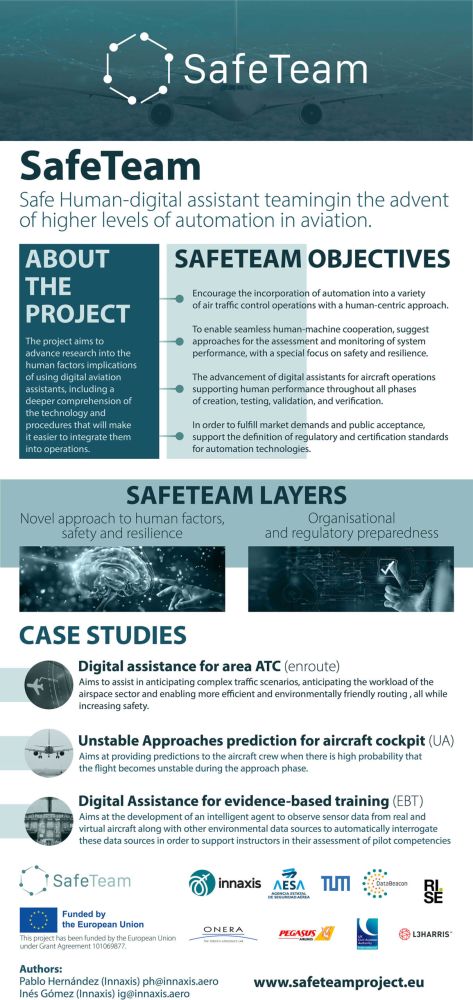
Poster for Sesar Innovation Days 2022

Poster for Sesar Innovation Days 2023
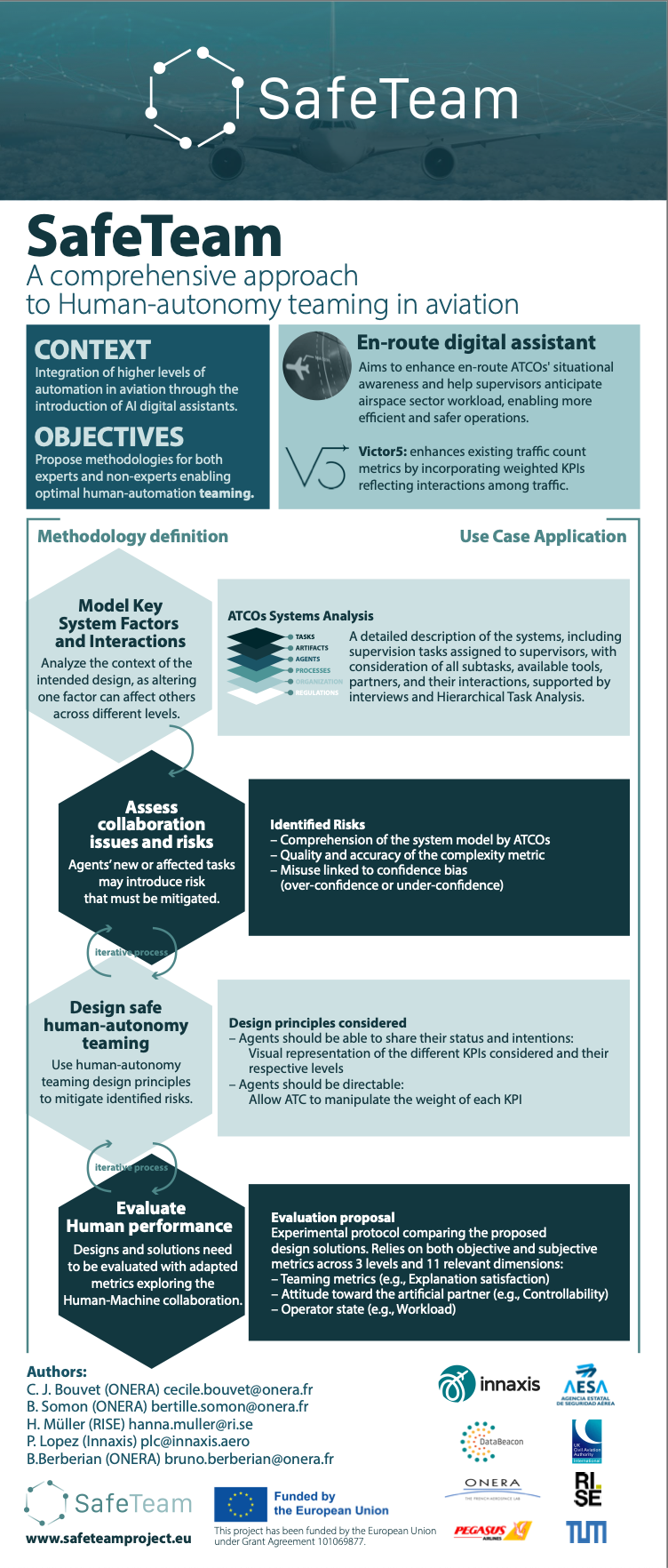
Poster for Sesar Innovation Days 2024
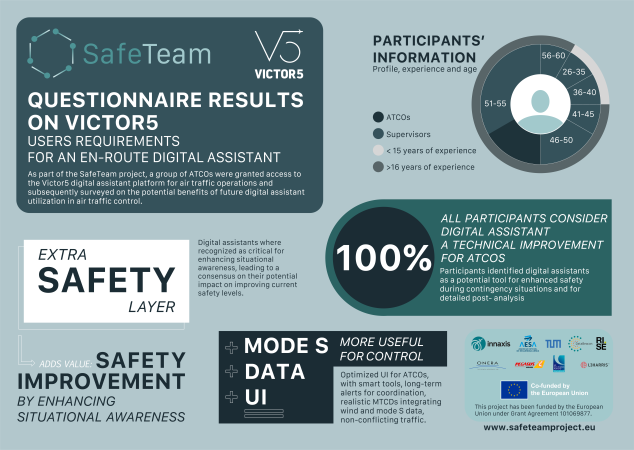
Infographic with conclusions on the questionnaire on Victor5.
Papers
Enabling Human-Autonomy Teaming in Aviation: A Framework to Address Human Factors in Digital Assistants Design
The introduction of artificial intelligence (AI) tools in aviation necessitates more research into human-autonomy teaming in these domain settings.
Read the full paper
Subset Simulation Based Operational Risk Assessment of Procedures for Go-Around Handling Enabled by a Predictive Decision Support
A method to assess a novel procedure for Air Traffic Controllers, enabled by predictions of a machine learning-based go-around prediction model, regarding the operational risk of separation infringements and traffic alarms.
Read the full paper
Public deliverables

This project has been funded by the European Union under Grant Agreement 101069877.

©SafeTeam consortium

